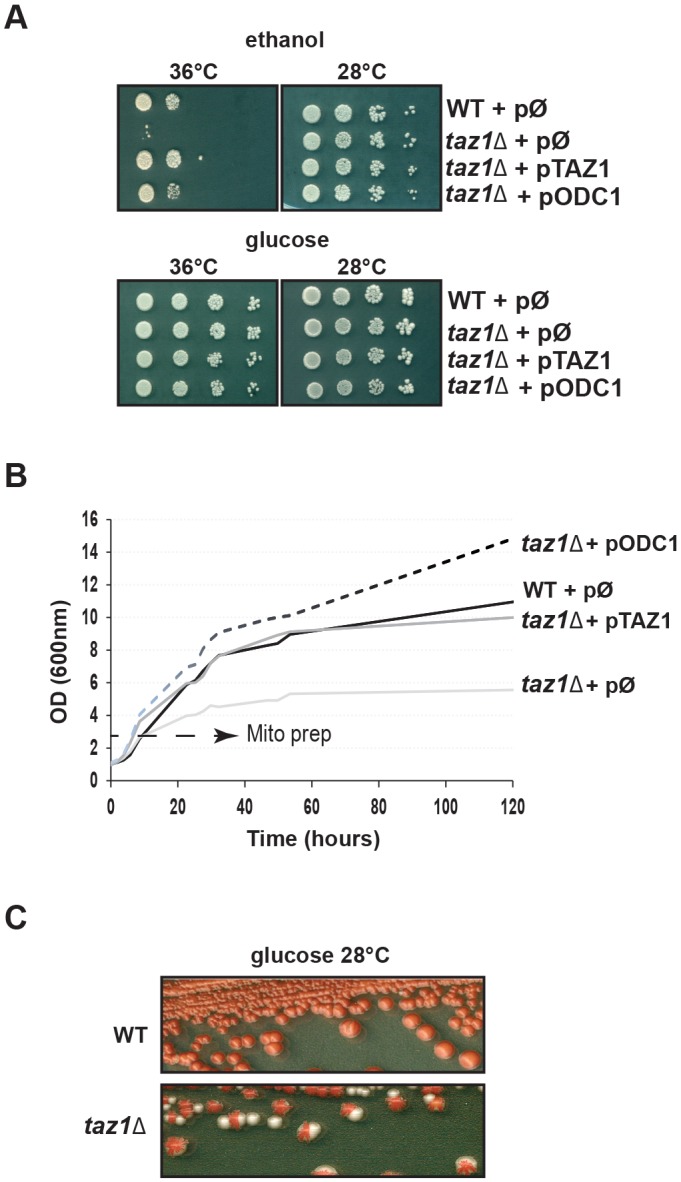Fig. 2.

Growth properties and genetic stability of yeast strains. (A) Growth on glucose and ethanol. Cells from the four analyzed strains (WT+pØ; taz1Δ+pØ; taz1Δ+pTAZ1; taz1Δ+pODC1) freshly grown at 28°C in complete synthetic medium (CSM) containing 2% glucose as a carbon source were serially diluted and spotted onto solid CSM+2% ethanol or CSM+2% glucose plates. The plates were photographed after 4 days of incubation at the indicated temperature. (B) Growth curves. Cells from the analyzed strains freshly grown in CSM+2% glucose at 28°C were inoculated into 50 ml of CSM+0.5% galactose+2% ethanol, and incubated at 36°C with shaking. Optical densities were measured over 1 week. The bioenergetics and biochemical investigations described in Figs 3-5 were performed with cells grown in these conditions (in 2 liters of medium) until 2-3 OD600 nm/ml as indicated by the dashed arrow. (C) Production of ρ−/ρ0 cells. Subclones of WT and taz1Δ mutant strains were grown on solid glucose plates with a limiting amount of adenine. Clones with a red color were picked and streaked on the same medium. The plates were photographed after 6 days of incubation at 28°C. As explained in the text, ρ−/ρ0 form entirely white colonies while those predominantly made of ρ+ cells are red.
